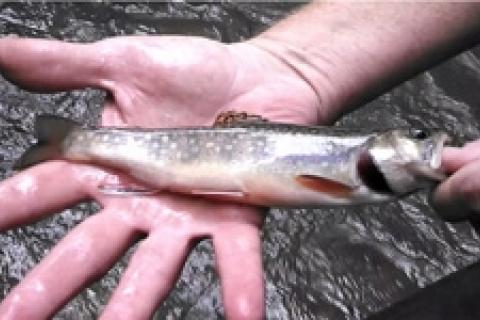
 It seemed fitting — on the day when we celebrate our independence — to not only go fishing, but to purse a native species. And in the northeastern United States nothing better fits such a description as the brook trout.
It seemed fitting — on the day when we celebrate our independence — to not only go fishing, but to purse a native species. And in the northeastern United States nothing better fits such a description as the brook trout.
We arrived at the back road pull-off an hour or so after dawn. It was already in the mid 70s and muggy when my friend Art and I eased into the cool waters of the mountain stream. A temperature reading on my stream thermometer registered 59 degrees — a good sign. Brook trout require cold water. We wanted to catch them, but we didn't want to overly stress them.
The 15 foot-wide stream was running hard from recent rain. We both opted for a go-to in such situations, a Wooly Bugger, in this case a bead-head variety. The added weight of the bead would help get the fly down a bit in the current.
We hadn't fished five minutes when Art hooked the first fish of the day — a brightly colored native. A moment or two later I watched as the first trout of my day rose up from under the trunk of a submerged birch to take my drifting fly.
The action was steady throughout the morning. Most of the promising looking pools produced a trout; in some cases as many as three came from a single spot. Art, who has a lot of experience fishing such streams, said this was a bit unusual, in that the spooky brookies tend to scurry once one of their kind has been hooked nearby. We attributed this to the higher, slightly off colored water, which probably masked much of the commotion.
The fishing was great that morning. We caught and carefully released plenty of native brookies, some of which were in the 9- to 10-inch range, which is big for western Pennsylvania waters, and a delight on a 7-foot fly rod. But as good as the sport was, it was a bonus. Spending time in a cold stream, one enshrouded with hemlocks and mature hardwoods, and nary another boot print in the streamside sand, was the adventure.
- 2453 views

